My dad was lucky that he didn't have any dementia or loss of memory, and he was sharp till near the very end. Even in the week before this last hospitalization, he designed new technology and ordered a high-end color laser printer that he was so excited to try. Go dad -- once an engineer, always an engineer. I'm also so glad that he was able to be in California for the last few weeks of his life, enjoying sunshine and clean air, the company of his grandchildren, and my mom's delicious home cooking. He was happy, and much more himself here.
The last few days have been difficult, and the grief ambushes me still, but I’ve also found a rare and precious comfort in sharing my grief and celebrating my father’s incredible life with my friends and family. Through the uncertainty and challenges of the last few months, my brothers and I have all become so much closer and far more understanding of each other. My dad's many near-death episodes also granted all of us a chance to come to terms and make peace with his dying in our own ways. Though the travel was challenging, I am grateful to have been with him as much as I have been. I know I've done all I can, and I know how much my father has appreciated our efforts to be with him and give him comfort and strength. My mom's been incredibly strong, as she always has been, but she's tired and deeply affected. I'm so glad I could be here for her and share many tender and teary laughs and cries. In some ways she's been preparing for this for some time, but nevertheless the impact is hard to imagine for her, and I hope she gives herself time to heal. She's planning on moving back to Beijing after my dad's funeral service. She still loves it there; for her, Beijing is definitely still home. We've been making some funeral arrangements and settling things as best we can. We had a very small, family dinner and commemoration for my dad last night, and will hold a full service on August 24th here in Berkeley at a beautiful chapel in Oakland designed by Julia Morgan, the Chapel of the Chimes. We'll also have a memorial service for him in Beijing in September sometime. I believe that the loss of my father – and the loss of anyone close and dear – directly shapes my ability to love more fully. If there’s one gift I truly treasure now, it’s a sense of timeless love that I’ll always keep in my heart for him, and for my whole family. His slow departure from this world also granted me affirmation that our time on this earth is precious but that our spirit is eternal. I know my dad is always going to be close. Nevertheless, the grief is there and I welcome it – it is sometime beautiful, and other times commensurate with the weight of losing my father, whom I loved so deeply. I'm going to miss you, dad, but I know your spirit is shining brightly, as it always has. You've returned to the universal energy that you always believed -- and I believe -- animates this magical, mysterious world we have. I love you, and will always love you, dad. Mimi
5 Comments
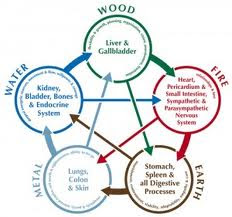 One of the best clearing, qigong practice to do when you're feeling sluggish, stuck, and not quite like you have normal energy levels is an organ-balancing meditation from the Daoist tradition and qigong. The practice involves breathing a color of a precious gemstone into each organ, and exhaling what dulls the shine of that color. The practice is inspired by Kenneth Cohen, but is a well-known Daoist healing technique. For the lungs, the color to breathe in is a pure diamond white. Exhale what dulls the brilliance of the diamond shine. For the kidneys, the color is sapphire blue; again exhaling what limits the color from shining its deep, splendid blue. For the liver, the color is emerald green; the heart, ruby red; and the spleen, topaz orange. With each organ, exhale what dulls the richness of the color shining through. Once you have brought breath and a richer color of precious gemstones to each organ, imagine all the gemstones of your organs shining beautifully inside your body, vibrant and alive. 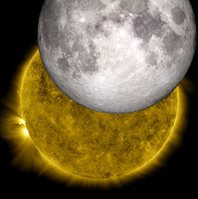 If you have time, follow with filling your body from the top crown of the head with golden yellow sunlight and silvery white moonlight, and let these pure qi sources of sunlight and moonlight fill through the entire form of your body. Then visualize this qi of the sun and moon beginning to send any toxicity, poison, lethargy or stuck energy outward through the pores of your skin. It may be a dark, thick substance that moves out, or – as I felt this morning – a prickly feeling that affects and energizes the skin, like little electrical sparks. Stay with this visualization long enough until the sensations on the skin subside, and then imagine a pure, clean glow from within begin to radiate out. This can radiate outward in any and all directions. I did these two practices this morning after my meditation instead of my normal, more active yoga or qigong practice. For both, I lay down in savasana, did the meditations, and found they left me revitalized and recharged. In fact, I feel so good now I thought I would share them here. Hope you enjoy them too! (earlier today I posted this newsletter, but realized soon after that I had referenced Schubert as an Australian composer; he is Austrianm This has been corrected in the text below. My error was in keeping with imperfection.)
Perfect imperfection June Newsletter Haruki Murakami, in his novel Kafka on the Shore, writes, "A certain type of perfection can only be realized through a limitless accumulation of the imperfect." In this book, Murakami's character is someone who likes listening to Schubert while driving, and says about this prolific Austrian composer that "all his performances are imperfect. A dense, artistic kind of imperfection stimulates your consciousness, keeps you alert. If I listen to some utterly perfect performance of an utterly perfect piece while I'm driving, I might want to close my eyes and die right then and there. But listening to the D major, I can feel the limits of what humans are capable of - that a certain type of perfection can only be realized through a limitless accumulation of the imperfect. And personally I find that encouraging.” In the yoga world, we often see images of incredibly flexible or athletic people doing impossible postures; they look beautiful, even perfect. Yet anyone who has stepped on the mat knows that the process of moving and opening the body can sometimes feel more like a cacophony of errors than balanced harmony. The reality is that even though much of the world celebrates or finds inspiration in picture-perfect yoga, what we actually do on our mats or in daily life is simply figure out how to work best with our imperfect selves. In fact, in yoga or other practices such as qigong or mindfulness meditation, one of the hardest but most valuable ideas we can learn is how to shift away from a paradigm of good, bad, right or wrong (though arguably we are getting it wrong if we hurt ourselves), and toward a new standard of doing, observing, and perceiving. Our efforts on our mat -- or in life -- are the manifestations of our perfectly imperfectly ways of being human. *** In other news, I've just redesigned and relaunched my website (www.mkdeemer.com). The content of the site is still expanding, but I've added a few new links, including a community page that has a section on "inspiration" as well as a very empty blog page under "about" - my plan is to begin archiving some things I write, or post things that might count as blog-worthy. I also have launched a new Facebook page. I created it recently, on June 2, so it's very new, and rather blank, but my intention is to pepper it with things that might be interesting (or could be dull, it all depends) as the days unfold. My vinyasa immersion is also coming up in July and August. There are still a few spaces remaining; please let me know if you are interested, or have any questions. You will immerse deeply into all things vinyasa! And lastly, my teacher Donna Farhi is coming to London (triyoga) June 20 - July 1.Many of her workshops are full, but the 5-day immersion has spaces still, as does her two-day Yoga Nidra workshop. I'll be at the 5-day immersion as a student; hope to see some of you there. Wishing you a perfectly imperfect day, Mimi (Originally posted on Movementformodernlife.com)
My first love was yoga, and for years I practiced it on its own, noticing how it helped bring me greater clarity and a feeling of overall increased health in my body and mind. In 2003, a year after I began teaching yoga, I was introduced to qigong – paradoxically by an American-trained teacher visiting China! While standing in the qigong version of Tadasana (mountain pose) – a pose characterized by a wider stance, bent knees, softer chest, and more circular shape to the arms – I began to feel a sense of centredness and vitality that was markedly different than what I felt when doing yoga. From that point forward, I began an exploration of blending yoga and qigong’s approaches to movement and energy in my own practice and teaching. Qigong (pronounced ‘chee-gong’) is a Chinese word meaning the ‘cultivation of life energy’. Many of the practices in qigong draw from a Daoist belief that nature and the universe are implicitly whole, and represent an ongoing rhythm and harmony that is always in balance. Human beings are viewed as a microcosm of the universe. As such, creating optimal balance and harmony within our own bodies offers us a chance to feel aligned with the innate balance and harmony of nature. Qigong also is the basis of Chinese martial art forms, and is frequently used in conjunction with Chinese medicine and Daoist practices. For example, a kung fu practitioner will practice qigong, as might an acupuncturist or Daoist priest. It is considered a healing art, and classified in China as a type of preventative medicine, or a means to help cure disease. The practice addresses the body and spirit, and works to refine the qualities of these simultaneously. Speaking in quite general terms, yoga asanas, or postures, tend to be more linear, focusing on stretching and extending the limbs and trunk in two directions. If you consider something like triangle pose, where the legs are straight, the arms extending equally apart, and the spine moving from the tailbone back and the crown of the head forward, it’s all quite linear in shape and design. In qigong, there is a stronger emphasis on soft, round, circular movements that are similar to wind and water. Joint spaces remain relaxed, and the movements are often repetitive, slow and rhythmic. There is less focus on complex bodily positions, and more attention given to how the mind directs the vital energy, or qi, through intention. Using intention is central in the practice of qigong, and often used to visualize something such as the elimination of stagnant, diseased qi, and replacement of it with healthy, vibrant qi. For example, one might inhale pure, healthy qi to an area of the body that feels weak, and exhale out the waste, imagining it becomes compost as it returns to the earth. Also, with qigong, there tends to be more of a focus on grounding and connecting into the earth. Active poses are often done with bent knees, allowing for the center of gravity to be closer to the ground. In yoga, unless the teacher is very conscientious to teach about the foundations and rooting through the earth, there can be a very strong upward flow of energy, or a sense of over “prana-fication.” Likewise, there are many qigong teachers who do not emphasize enough yang, or upward flow and movement, resulting in hunched bodies and rotund bellies (as Daoists are often shown!). While yoga is still my main love, qigong has a steady place in my daily practice. I find it offers me a slow, movement-based practice that focuses my intention in specific ways to heal and rid my body of poisons – be it thoughts or physical sensations like tension or fatigue – and increase my levels of energy and healthy prana. I also find that as a teacher, I rarely get cold, clammy hands — a huge benefit when teaching and giving adjustments in class. |
AuthorTeacher, writer, lover of movement and meditation who lives with her husband, dog, three cats, 6 chickens and 10,000 bees. Archives
December 2022
Categories
All
|
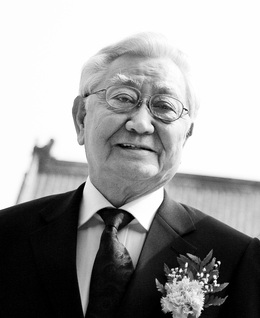
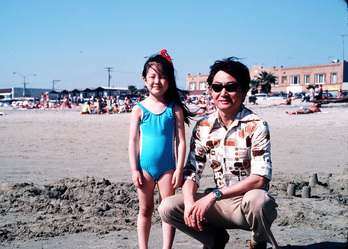
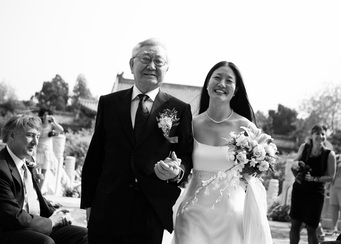
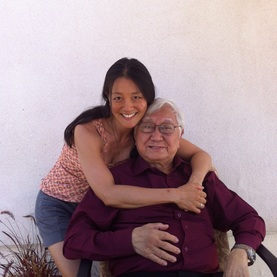
 RSS Feed
RSS Feed